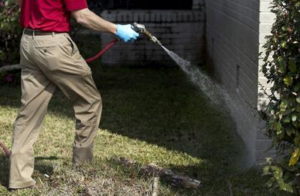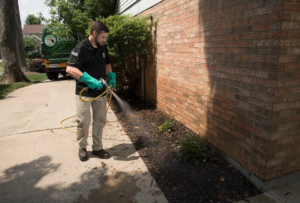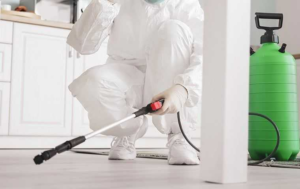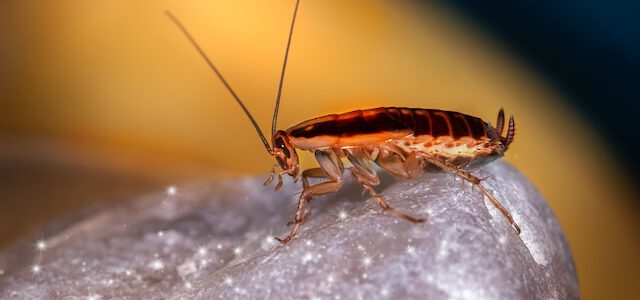Pests like cockroaches, termites, ants, rodents and spiders can cause health issues and property damage. They can spread diseases like hantavirus, leptospirosis and plague.
Physical pest control methods include blocking entrances, removing nests and using traps. Chemical pesticides are often used. However, be careful when using chemicals around children, pets and native animals. Contact Pest Control Nampa now!

Pest identification is the first step in any integrated pest management (IPM) situation. Identifying pests and understanding their biology is essential to designing and implementing an effective IPM plan that will minimize the damage they cause without using harmful chemicals. It is important to familiarize yourself with each pest’s life cycle, habitat requirements, time and location of occurrence, feeding habits, reproductive habits, and other biological indicators that can help in pest identification.
Scouting is a common IPM practice that involves regularly searching for and identifying pests and their damage. Accurate pest identification is important, since the appropriate control methods can vary dramatically depending on the particular pest species.
Most pests have specific windows of vulnerability during their life cycle, when they are most susceptible to control measures. For example, weeds are often easiest to control in the seedling or early growth stages. Insects are usually most vulnerable in the larval or immature adult stages. Diseases are often easiest to control if detected and treated at the initial infection stage.
In IPM programs, pests are controlled by a variety of tactics that might include cultural practices, physical removal or use of biological controls such as beneficial insects, mites and pathogens. The key is to treat only for those pests that are actually present and causing damage. This targeted approach reduces the environmental impact of pesticide treatments and allows for rapid response to new infestations.
Proper identification is also necessary for monitoring pest populations. For example, monitoring for chrysanthemum leafminers can be improved by identifying the specific species that is causing damage and separating it from other “leafminer” species that are less problematic.
Many of the same techniques used for identifying pests can also be employed to monitor and identify natural enemies, the organisms that prey on or parasitize pests. In fact, IPM programs often conserve natural enemy populations by providing conditions that promote them, such as undisturbed buffer strips around managed areas. If pesticides are used, products that have a lower risk of harming natural enemies are selected. This allows natural enemies to re-colonize the area more quickly after pesticide treatment.
Pest Prevention
Traditional pest control involves a response to an observed infestation. Once a pest is identified, a plan is devised to eradicate it using measures like spraying and traps. However, a much better approach is to deny the pests entry into the building in the first place. Pest prevention takes a more proactive view to controlling pests, including inspection of incoming goods, sanitation and cleaning practices, exclusion, environmental barriers, maintenance and cultural practices that discourage pests.
Pests are attracted to food, water and shelter. Many factors influence the success of pests, and they can be hard to alter, but limiting the amount of access they have to these resources is an excellent way to prevent an infestation.
Food is often a source of pests, whether it is old or spilled, and the smell can attract them to a property. Properly storing food in containers and removing garbage regularly will eliminate this attraction. Keeping kitchen counters clear of uneaten food and leaving dirty dishes alone will also help prevent pests.
Clutter provides places for pests to hide and breed, so eliminating clutter around a property is a key factor in pest prevention. Regularly sweeping and vacuuming floors, and sanitizing all areas of the home or business will also help deter pests.
Many people think of their homes and businesses as being pest-proof, but dozens of imperceptible cracks, gaps and holes can offer pests an easy way in. Caulking these openings, using steel wool to fill holes and sealing up spaces around pipes can all greatly limit the number of pests entering a structure.
Besides creating an unwelcome visitor, pests can be a health risk and cause damage to the home or business. Many pests spread disease, and the presence of some can even threaten the safety of children or pets. A preventive approach to pest control can minimize the need for toxic pesticides, and a well-thought-out combination of prevention and control methods can keep unwanted visitors at bay. Suppression of pests that are already present should always be a part of a prevention strategy, and the right pest control solution can reduce the population to an acceptable level.
Pest Control Methods
Pest control involves managing the numbers of pests to an acceptable level and causing as little harm as possible to people, plants, and other organisms. There are three levels of control: prevention — keeping the pests from ever becoming a problem; suppression — reducing their population to an acceptable level; and eradication — eliminating them. Prevention may involve changing the environment in which the pests live to make it less suitable for them. This may include the removal of weeds that compete with desirable plants, cleaning up crop debris to remove places for pests to hide, or sealing cracks in walls and windows. It may also involve introducing natural enemies to a pest population, such as predators or parasites.
Chemical control involves using substances to kill or inhibit a pest’s growth or development. This may be done by applying physical barriers or traps, or through chemical means such as fumigation or spraying. This is usually done only when other methods have failed and may be used in conjunction with preventive measures. Chemicals used for pest control may be natural products, synthetic mimics of natural products, or completely synthetic compounds.
Biological pest control uses living organisms to suppress or eliminate pest populations. These organisms may be predators, parasites, or pathogens. They are often introduced to a pest population after careful selection and testing for their ability to impact the specific species of pest under consideration. This process is known as biocontrol and requires a thorough understanding of the biology of the pest and its natural enemies.
Physical pest control is often effective for a wide range of pests, including rodents and insects. It can include things like removing and securing nests, sealing cracks in homes, caulking around windows, and installing door sweeps and weather stripping. It can also involve setting traps or establishing bait stations, with regular checks and removal of caught pests. It can be helpful to know the pests in your area and tailor the controls you use to those particular species, which will save time and money and reduce off-target effects.
Pesticides
A pesticide is any substance that kills or controls a pest, such as insects, mice, birds, unwanted plants (weeds) or fungi. It can also modify a plant’s growth, drop its leaves prematurely (defoliant), or promote drying of living tissues (desiccant). There are many different types of pesticides. Some are made from naturally occurring substances; others are manufactured synthetically. Some are designed to be used on organic crops; others are permitted for use on conventional crops.
When using any pesticide, read and follow the label directions carefully. It is important to note that pesticides can have harmful effects on humans and animals, as well as the environment.
Remember that even “organic” and “natural” pesticides can be toxic at high levels. Whenever possible, seek alternative methods of controlling pests.
Properly identify pests before purchasing or applying any pesticide. Many products only work on one type of insect or mite and have narrow activity ranges. Others only have activity against a certain group of plants, such as weeds or grasses.
Use a pesticide with the least environmental impact. Pesticides that have a greater potential to harm the environment are usually more expensive and require more frequent applications than do those with lower environmental impacts.
Avoid repeated use of any pesticide. This puts unnecessary pressure on pest populations, which may lead to their developing resistance to the chemical. Generally, it is recommended to switch to another pesticide with a different mode of action about every two to three pest generations.
Keep pesticides in safe storage areas, away from food and classrooms. Ensure that only those with the proper credentials can access them.
Work with pesticides only in a well-ventilated area, and always wear protective clothing. Be sure to have soap and water available, as well as towels for rinsing or cleaning hands and faces. Read and follow the OSH Answers document, Pesticides – Working Safely, for more information on safe handling, storage and disposal of pesticides. It is also a good idea to have a pesticide emergency plan in case of accidental spills or exposure. The plan should include details about where the chemicals are stored and how to contact appropriate authorities.







